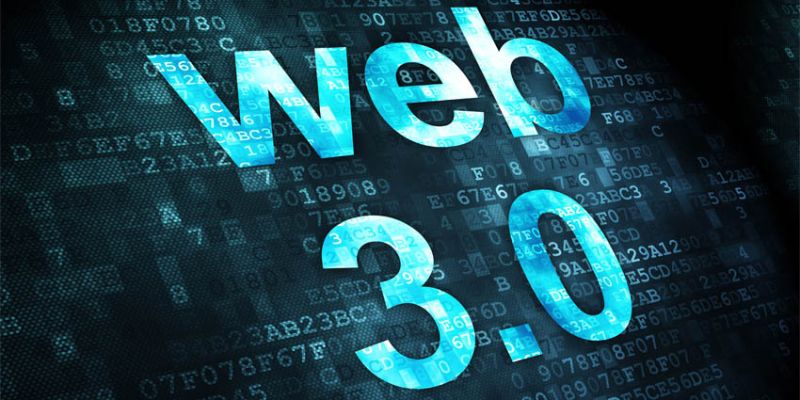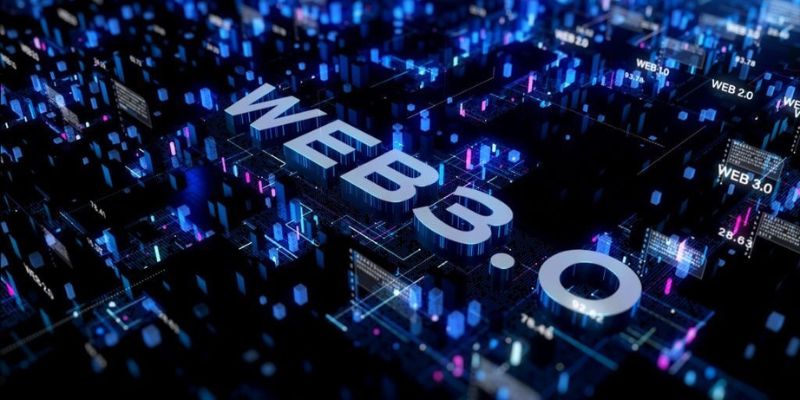Web3. It’s a term that’s been buzzing around, capturing the attention of technologists, investors, and tech enthusiasts alike. But what exactly is Web3, and why is it causing such a stir in the industry? In this article, we’ll delve into the world of Web3, exploring its potential, its critics, and its implications for the future of the internet.
A New Kind of Internet

Web3, in essence, is a new kind of internet service that is built using decentralized blockchains. These blockchains serve as shared ledger systems, similar to those used by cryptocurrencies like Bitcoin and Ether. The term has been around for a while, but it has gained prominence in recent years.
At its core, Web3 is all about an internet owned by its builders and users, orchestrated with tokens. Proponents envision a future where Web3 takes various forms, including decentralized social networks, play-to-earn video games, and NFT platforms for trading digital culture. The ultimate goal is to transform the internet as we know it, disrupting traditional gatekeepers and ushering in a new era of a middleman-free digital economy.
However, critics argue that Web3 is merely a rebranding effort for crypto, aimed at shedding some of the industry’s cultural and political baggage. They believe that Web3 could potentially lead to a dystopian vision of a pay-to-play internet, where every activity and social interaction becomes a financial instrument to be bought and sold.
The Web3 Boom
So why is there suddenly so much buzz around Web3? It can be attributed to a combination of hype, marketing, and the fear of missing out on the next big thing. But there are also tangible reasons behind the excitement.
The rise of Web3 can be linked to the influx of capital, talent, and energy into crypto startups. In 2021 alone, venture capital firms have invested more than $27 billion in crypto-related projects, surpassing the total investments made in the previous decade. This injection of capital has fueled the growth of Web3 projects, attracting attention from big tech companies like Twitter and Reddit, who are starting to experiment with their own Web3 initiatives.
Moreover, Web3 has become a magnet for tech talent, with employees from established tech firms leaving their stable jobs to seek fortune in the Web3 space. This talent influx is driving innovation and propelling the development of Web3 applications.
Understanding Web1 and Web2
To better comprehend Web3, it’s essential to understand its predecessors. Web1 refers to the early internet of the 1990s and early 2000s, characterized by static web pages and open protocols. Web2, on the other hand, emerged in the mid-2000s with the advent of social media platforms like Facebook and Twitter, allowing users to actively participate in the internet.
Web3 aims to combine the open infrastructure of Web1 with the public participation of Web2, creating a new internet where power and ownership shift back to creators and users. This vision entails replacing centralized, corporate platforms with open protocols and community-run networks.
The Promise of Web3

Advocates of Web3 argue that a blockchain-based internet offers several advantages over the current internet landscape. Firstly, Web3 platforms can provide creators and users with opportunities to monetize their activities and contributions in ways that traditional platforms do not. For example, a Web3 version of Facebook could allow users to monetize their own data or receive crypto tips from other users for posting valuable content.
Secondly, Web3 platforms could function with democratic governance, allowing users to have a say in decision-making processes. This would be a departure from the autocratic control wielded by big tech platforms like Facebook and Twitter.
Lastly, Web3 proposes a shift away from advertising-based business models, prioritizing user privacy and reducing reliance on targeted ads and data tracking.
While this idealistic vision of Web3 is captivating, it’s crucial to acknowledge that it is still largely theoretical. The reality may differ significantly from the utopian concept presented by its proponents.
Examples of Web3 Applications

To help grasp the concept of Web3, let’s explore a couple of real-world examples.
One prominent example is Axie Infinity, a video game developed by the Vietnamese game studio Sky Mavis. Axie Infinity utilizes non-fungible tokens (NFTs) and Ethereum-based cryptocurrencies to reward players with real money for achieving in-game objectives. Players can breed characters called Axies, battle other players, and collect virtual land, all while earning tokens that can be traded on cryptocurrency exchanges.
Another example is Helium, a crypto-powered wireless network. Helium allows people to share their home or office Wi-Fi bandwidth through special devices, earning Helium tokens when nearby devices utilize their network. This decentralized approach to building a wireless network has garnered significant traction, with over 500,000 active hot spots and applications ranging from parking meters to electric scooters.
These examples illustrate the potential of Web3 applications to incentivize and transform various activities, whether it’s gaming, sharing internet bandwidth, or other aspects of our digital lives.
The Controversies Surrounding Web3
As with any emerging technology and paradigm shift, Web3 is not without its controversies. Critics have raised valid concerns, pointing out potential technical limitations of blockchains and questioning the decentralization claims made by Web3 proponents.
Some skeptics argue that blockchains are slower and less capable than standard databases, making it challenging to scale Web3 services to meet the demands of popular platforms like Uber or Facebook. They posit that building centralized services on top of blockchains could undermine the very principles that Web3 stands for.
Others believe that Web3 is an attempt by wealthy investors to pay lip service to decentralization while still maintaining control over new centralized services. This criticism questions whether Web3 is truly empowering creators and users or simply replacing old gatekeepers with new ones.
The Future of Web3

Regulators have yet to fully address the implications of Web3, but they are likely to do so in the near future. One major challenge lies in the regulatory gray area surrounding crypto tokens that are crucial to many Web3 applications. The classification of these tokens as securities or assets will likely have significant legal and operational implications for Web3 projects.
Web3 is also closely intertwined with the concept of the metaverse, immersive digital worlds where users can socialize and engage in various activities. Web3 proponents argue that it is an essential component of a metaverse not controlled by a single entity or governed by restrictive rules.
In conclusion, Web3 represents a potential paradigm shift in the way we interact with the internet. While its promise of a more decentralized, user-centric digital landscape is enticing, it is still in its early stages, and many challenges lie ahead. The road to a mature and widely adopted Web3 will require overcoming technical limitations, navigating regulatory landscapes, and addressing the concerns of skeptics.
FAQs
Q: What is Web3?
A: Web3 is a new kind of internet service built using decentralized blockchains, aiming to create an internet owned and operated by its builders and users.
Q: Why is Web3 generating so much buzz?
A: The excitement around Web3 stems from a combination of capital inflows into crypto startups, the rise of decentralized technologies, and the potential for a middleman-free digital economy.
Q: How does Web3 differ from Web1 and Web2?
A: Web1 refers to the early internet of the 1990s and early 2000s, while Web2 represents the era of social media platforms and user-generated content. Web3 combines the open infrastructure of Web1 with the user participation of Web2, aiming to give power and ownership back to creators and users.
Q: What are the criticisms of Web3?
A: Critics argue that Web3 is a rebranding effort for crypto and that it might lead to a dystopian pay-to-play internet. Skeptics also question the technical limitations of blockchains and argue that Web3 could result in new centralized services controlled by wealthy investors.
Q: What is the future of Web3?
A: The future of Web3 is still uncertain, as it faces regulatory challenges and technical limitations. However, its potential to reshape the internet and create a more user-centric digital landscape is generating significant interest and investment.
References:
- “Beyond the Bitcoin Bubble” – New York Times Magazine
- “My First Impressions of Web3” – Moxie Marlinspike
- “The Web3 Renaissance: A Golden Age for Content” – Li Jin and Katie Parrott
- “Notes on Web3” – Robin Sloan



